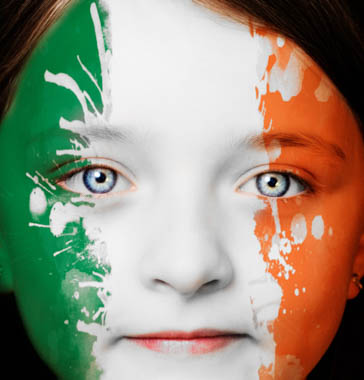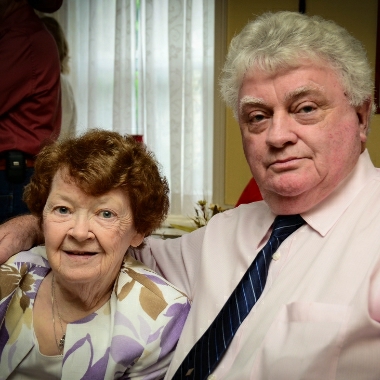
Photo from iStockHoto
Skin cancer is on the rise, so much so that a couple of weeks ago the US Surgeon General Boris Lushniak, himself a dermatologist, called it a major public health problem. In the US, more skin cancer cases are diagnosed each year than breast, prostate, lung, and colon cancer cases combined.
And if you’re of Irish descent, you have a great big target plastered on your lilywhite skin. When you read any list of skin cancer risk factors, having fair skin is always at the top.
Cherie M. Ditre, MD, an associate professor of dermatology at the University of Pennsylvania, says that the Irish are better off embracing their whiteness or, failing that, finding their tan in a bottle, cream, or spray booth.
“I had an Irish grandmother from Leitrim who stayed out of the sun and still had beautiful skin the day she died at the age of 84,” says Dr. Ditre. “My Irish patients all wish they had darker skin but I always tell them, ‘your skin is really the most beautiful, really clear and pretty and white. Learn to see it that way.’’”
Lauraileen O’Connor, a musician and branch member of the Mid-Atlantic Comhaltas Ceoltoiri Eireann, an international organization that promotes Irish music and culture, wishes she had. “I grew up in California and as a kid I would slather myself with baby oil and I would really burn—there wasn’t any sunscreen back then.”
Both her mother and grandfather had skin cancer, and a few years ago, her primary care doctor noticed a suspicious spot on her back and advised her to “have that looked at.” She did. “The doctor said, ‘yeah, we’re taking that off!’” It was brown, irregularly shaped and raised and about ¼ inch across. It was basal cell carcinoma, a slow-growing cancer and probably the most common of the skin cancers.
“They really took quite a chunk out of me, about 3.4 of an inch, to get all the margins,” says O’Connor, who is a meteorologist at the National Oceanic and Atmospheric Administration in Maryland. “I developed an allergy to the tape they used to cover up the site and got cellulitis,” a potentially serious bacterial infection. “It was not pleasant,” she says.
“Basal cells cancers are what I see most often in my Irish patients,” says Dr. Ditre. “I always say that if God said I’m going to give you cancer but you get to pick one, pick basal cell, because for the most part it stays local, meaning doesn’t go to the lungs or liver, and the treatment is not disfiguring.”
Somewhat more dangerous is squamous cell carcinoma because it can travel to the lymph nodes, small, bean-shaped glands that normally carry fluid, nutrients and waste throughout the body, but which can also carry cancer cells. Actinic keratosis—scaly or crusty growths caused by sun damage—can develop into squamous cell cancer if they’re not treated. If you spend a lot of time in the sun, have blonde or red hair, and blue, green, or gray eyes, you’re at higher risk than others of developing one of these precancers.
The most dangerous of the skin cancers is malignant melanoma, cancers that develop in the pigment cells in the skin called melanocytes. They’re often triggered by intense sun exposure which causes the cells to mutate and multiply rapidly, though there’s research suggesting that some melanoma may also have a genetic basis.
Holly Conboy isn’t sure what to blame for her melanoma. Conboy says she got a few bad burns when she was a child—including some that blistered—which is a strong risk factor for melanoma. But she also has a couple of cousins who’ve had it too.
But about 10 years ago, the insurance broker from Philadelphia noticed that a mark on the bottom of her foot that she had since an injury she got when she was 15 was suddenly sore. “I was switching to summer slide-one shoes and it started irritating me. It looked like I had a blister there,” she recalls.
She thought it would heal, but instead it got worse, so she went to the doctor who did a biopsy. “A week later he called me, and told me, ‘you have melanoma,’” she says. She was shocked, but not as much as she was when he told her he wanted to amputate her leg below the knee. “I wasn’t in denial, but I knew I needed a second opinion,” she says.
A second doctor thought a more modest surgery—one that would still take about a third of the bottom of her foot—would take care of the cancer. A plastic surgeon used remaining muscle to fill in the hole left by the excision. Then she underwent chemo and other treatments. She’s been cancer free since then.
There are many other treatments for skin cancer, including surgery, which can be disfiguring if your cancer isn’t caught and treated early. Melanoma can be survivable, but it still kills almost 10,000 Americans a year. Your best defense: prevention.
For the Irish and others with fair skin, there’s one cardinal rule, says Dr. Ditre: “Thou shalt wear sunscreen.” All the time.
In fact, she advises people of Irish descent to follow the Australian commandments: Slip, slap, slop. “Australians have the highest rate of melanoma in the world,” says Dr. Ditre. No surprise—that can happen when so many people of Irish descent live in one of the sunniest places on earth. “Australians are told to slip on a shirt, slap on a hat, and slop on the sunscreen.”
Rule of thumb for sunscreen: Look for skin protection factor (SPF) of a minimum of 30, says Dr. Ditre. She recommends several products, including Anthelios sunscreen with Mexoryl, which is the trade number for several chemicals that absorb both kinds of ultraviolet rays, UVA and UVB; TiZo, and Neutrogena Pure and Simple which contain the UV-ray-blocking minerals titanium dioxide and zinc, which are safe even for babies. “Titanium and zinc can absorb into the skin and they’re chemically inert so they don’t cause any problems or controversy. If we put zinc oxide on baby’ s bottoms [for diaper rash], why not?” she says.
If you have trouble with the esthetics of being the white spot in the sea of tan on the beach, console yourself that your skin will stay beautiful longer than that tanned bikini babe or buff lifeguard.
“Scientists have done studies of identical twins, one who lives in North Dakota, and the other in California or Florida, and the one who lives in the sunny climate can look 20 years older than the twin from the north,” says the dermatologist. “Sun exposure can turn your skin into leather.”
And really, that’s not a good look for anyone.
Read more about skin cancer and how you can prevent it at the website of The Skin Cancer Foundation or the American Academy of Dermatology.








